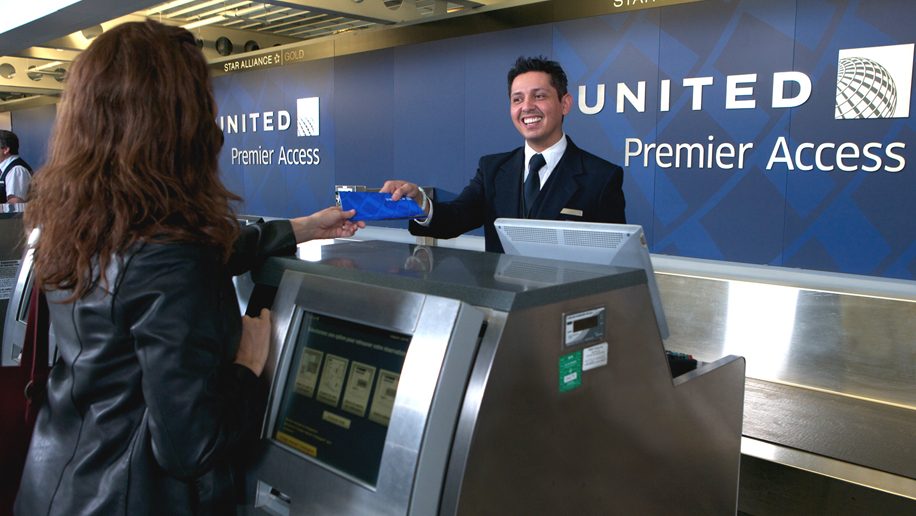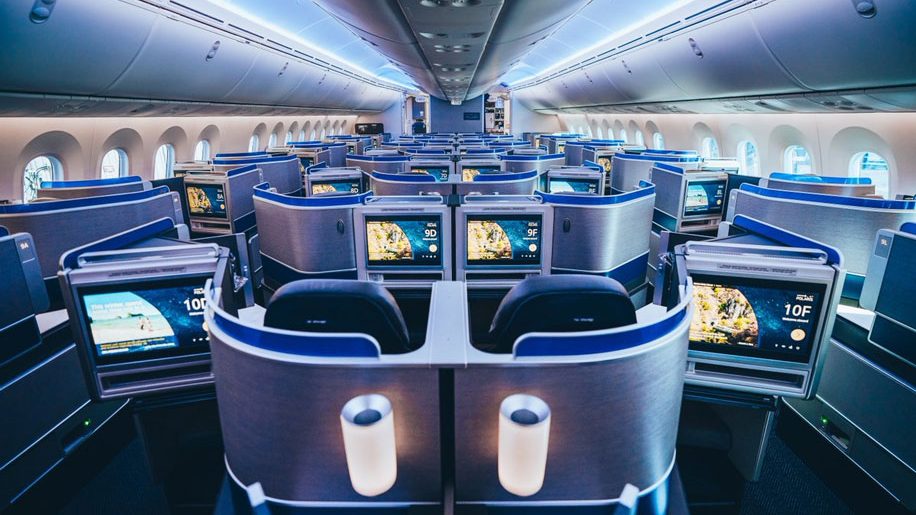
When most frequent flyers think of US airlines, customer satisfaction is rarely what comes to mind – especially for Asia-based business travellers used to the high-class service of Asian flag carriers like Singapore Airlines, Cathay Pacific and Korean Air.
But United Airlines’ managing director for Greater China and Korea wants to change that perception and convince Asia-based travellers to choose his airline for their transpacific travel.
“It’s unfortunate, but perception trails reality sometimes,” Walter Dias told Business Traveller Asia-Pacific during a group interview in Wan Chai, Hong Kong. (Three journalists from other media companies also attended the interview.)
Dias noted that during the 1980s and 1990s, US carriers were financially struggling and thus became “very poor customer service companies”. However, he added, because of industry consolidation (including the 2010 merger of United and Continental Airlines), North American carriers are now among the most profitable in the world.
That newfound profitability means United can now afford to reinvest heavily into its product and customer service, with capital expenditure over the last three to fours years averaging US$3.5 billion per year.
“Everyone thinks of United with the B747 with the screen on the ceiling. That’s not the reality; that’s five years ago… I will put our Polaris product up with any airline in the world as far as business cabin service is concerned,” he said, referring to the airline’s new business class offering, which in April became available on the Newark-Hong Kong route. He said United has bought 18 brand new B777-300ERs to replace its B747s.
Indeed, United has “completely eliminated the old United business class cabin from the Hong Kong market”.
In March, United started operating its daily Newark-Hong Kong flight with a B777-300ER instead of a B777-200. The new aircraft type is outfitted with Premium Plus premium economy and Polaris business class seats (as well as standard economy seats).
Dias said United saw a 25 per cent increase in seat booking rate after announcing operating the new aircraft type on that route. The total percentage increase in United’s seat capacity for direct flights to Hong Kong after switching from the B777-200 to B777-300ER is around six to eight per cent, he added.
“That again demonstrates the confidence that we have in the Hong Kong market and the importance from a business standpoint for our customers in the United States and our customers here in Hong Kong to really provide that type of service in this marketplace,” he said.
United is converting one aircraft every ten days to the new Polaris and United Premium Plus seating configuration, Dias said.
“We really do feel that by the end of next year we’ll have more than 120 international widebody aircraft converted into the new configuration, so we’re excited about that,” he said.

Putting the customer second (after safety)
Perhaps the biggest single incident in recent years that negatively affected United’s customer service reputation was the case of David Dao, a passenger who was forcibly removed from an overbooked flight at Chicago’s O’Hare International Airport on April 9, 2017, resulting in a concussion, a broken nose and two missing teeth (according to ABC News).
Though he did not refer to this incident during the meeting, Dias outlined an array of ways that United is investing in improving customer service.
He pointed to the previously announced “core4” training programme, which focuses on four characteristics: caring, safe, dependable and efficient. The programme is targeting not only United’s 90,000 staff, but also up to 40,000 third-party supplier and vendor staff.
Dias noted that while safety is “always number one” for airlines, a lot of airlines concentrate on efficiency as their number two priority. United, however, has decided to put customer care ahead of efficiency as a priority.
“We still want to be efficient, so we’re looking at making sure that we’re doing things in the most efficient manner that we can, but we put customer care all the way up at number two,” he said.
He added: “In that process, we’re training all of our 90,000 employees on ‘core4’ where we focus on the customer care perspective of our service. In addition to that, we’re actually taking our 25,000 flight attendants and actually bringing them to Chicago to spend time with our executive team and share the vision of what they have of United’s future and interact with our flight attendants.”
Photo below: Walter Dias, managing director for Greater China and Korea, United Airlines

Network improvements
Dias also discussed how United has increased the efficiency of its network over the past three to four years.
He described United’s old network in Asia as “kind of old school, inefficient”, saying that “in the old days, airplanes couldn’t fly as hard as they can today”.
Consequently, many airlines created hubs in places like Tokyo, Hong Kong and Hawaii to allow customers to connect to other destinations. However, Dias said that Boeing’s Dreamliner and the Airbus A350 have “revolutionised” the industry, allowing airlines to fly long, thin routes.
“One of the reasons United decided to fly to Chengdu was that we had a B787 in our pocket and that aircraft is perfect for that type of flying,” he said, referring to a route the airline started flying in 2014.
He added that the B787 also allowed United to fly from San Francisco to Singapore non-stop.
“It’s the longest B787 flight in the world. We couldn’t do that without that aircraft,” he said.
Dias said that once United realised it could launch these routes with the Dreamliner, it had to reassess its “Hong Kong mix of flights”, as well as its joint venture with Japan’s All Nippon Airways’ (ANA) which has allowed it to serve markets it otherwise couldn’t reach from Hong Kong, including Jakarta and Kuala Lumpur.
Regarding United’s now-defunct daily Hong Kong-Singapore flight, Dias said: “It was timed to connect to our US bank, and so it was at a very inconvenient time for local customers to go back and forth, so we didn’t really compete well with other airlines who had multiple flights a day between Hong Kong and Singapore.”
As for United’s joint venture with ANA, Dias said United has been able to increase the number of destinations that its customers have access to by connecting to ANA flights. At the same time, ANA has been able to add flights that it would not have flown before, such as Jakarta or Kuala Lumpur, because “they have the support of the United customers coming over from the US to Tokyo and connecting on there”.
He said that as a result, United is actually “flowing more customers over Narita” than it was five years ago.
“From that standpoint, when you look at our number of customers transferring in Narita, actually that market has become more important to us now even though we’re not flying the intra-Asia stuff,” he said.
“That’s the power of the joint venture that has allowed us to actually add more points on our network with our customers in the United States or our customers in Southeast Asia.”

Prospects for China
Dias said he and United are “very, very bullish” on the continued growth of the Greater China market.
Asked by a reporter about plans to fly to Shenzhen and Guangzhou, Dias said that “people don’t realise how much traffic is coming from across the border and supporting the Hong Kong airport”.
“There is a lot of traffic coming across and, interestingly, the infrastructure activity that’s been going on between Hong Kong and the rest of the Pearl River Delta – when you see the Hong Kong-Macau-Zhuhai bridge, that’s opening up an area that’s never been open before,” he said.
“Like, when you really think about the western part of the Pearl River Delta beyond Macau and beyond Zhuhai, that’s never had access before, so it’s going to be interesting to see what that can drive over to Hong Kong.”
Dias said that back in 2007, United actually scheduled to fly a non-stop service from Guangzhou to San Francisco, but the route was a “victim of the global economic crisis at the time” and was suspended before Untied even had time to start it.
He mentioned the People’s Republic of China government’s Greater Bay Area plan as something likely to drive growth in that region.
“We have to think of GBA [Greater Bay Area] as a growing pie. I think the Central Government’s policies should help the pie grow at a faster rate than it would naturally grow at, and the fact that you have big airports in Shenzhen and Guangzhou,” he said. “Of course, they’re getting their natural catchment customers as well, but I think as the pie grows it’s going to help Hong Kong International Airport grow.”
He was cautiously optimistic about the potential to open new routes to China.
“We have an office in Guangzhou that focuses on selling Hong Kong flights, but we believe that at some point in time the market will continue to grow where we can add incremental flights in the marketplace, whether it be in Hong Kong or Guangzhou or Shenzhen – we’re not sure yet,” he said.












